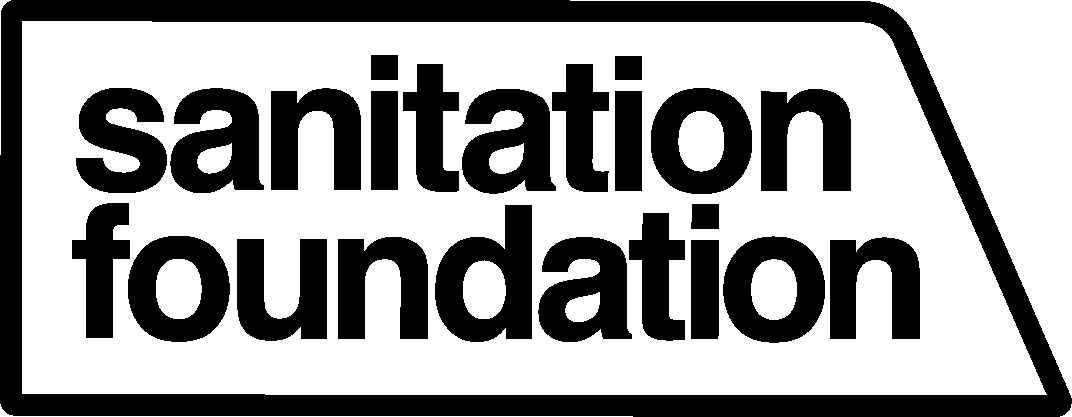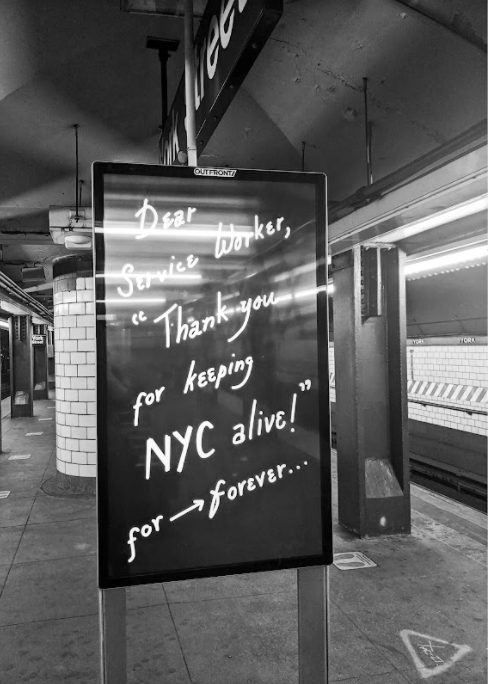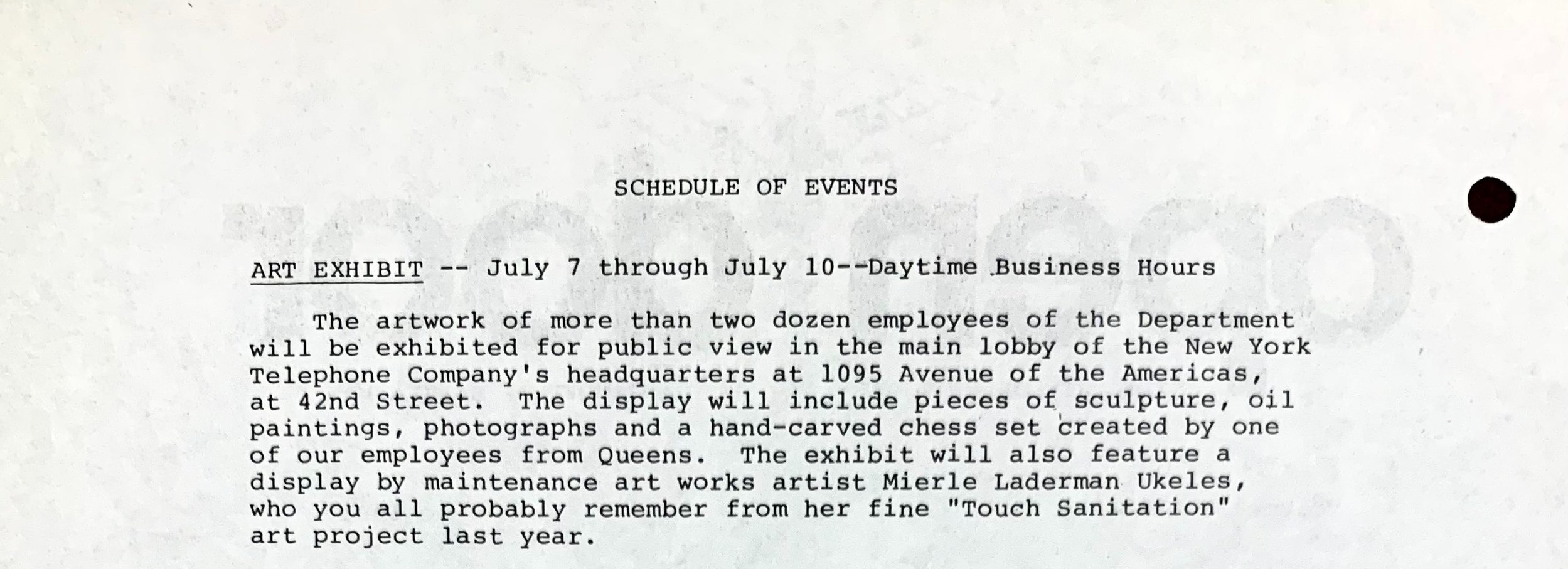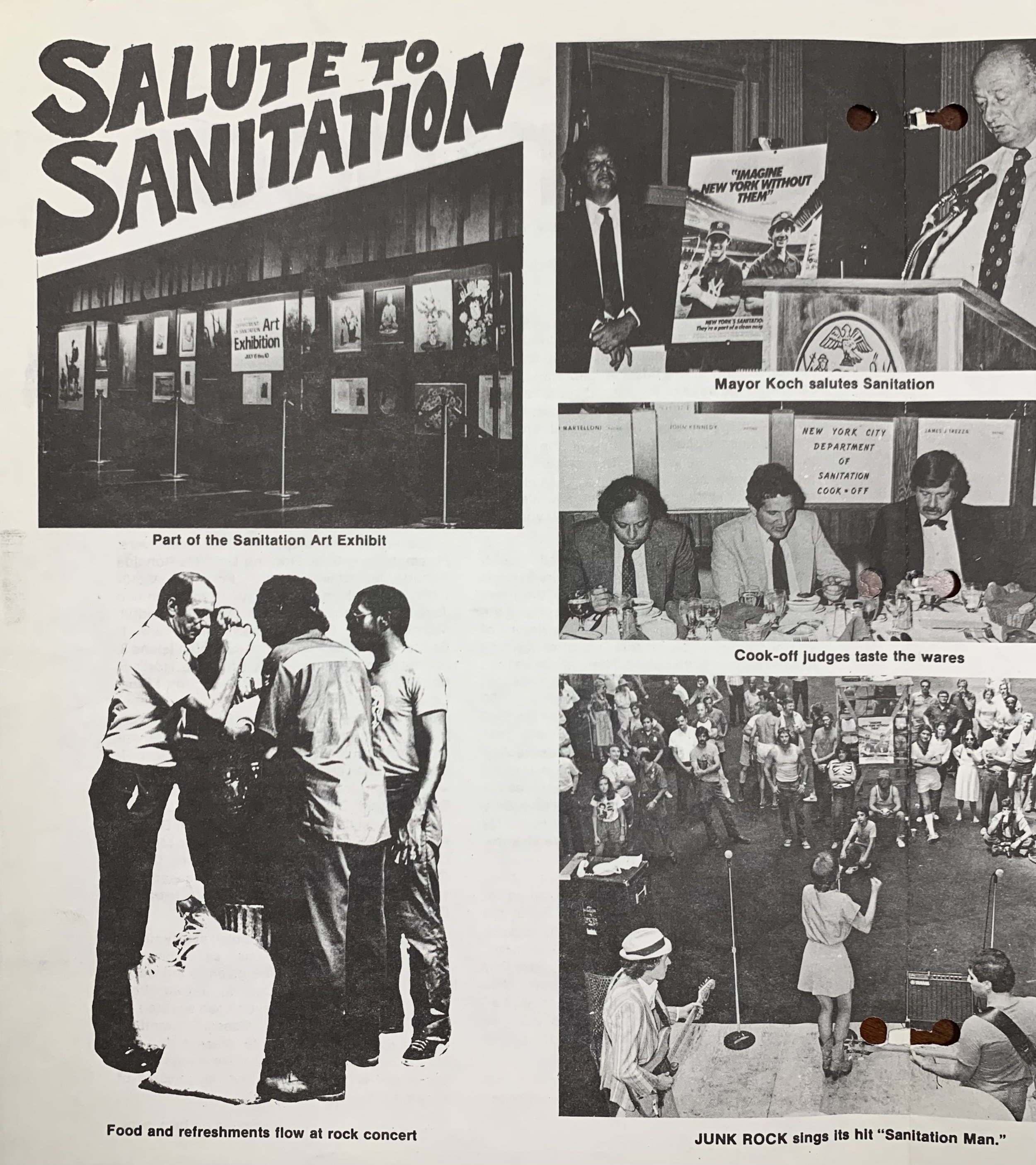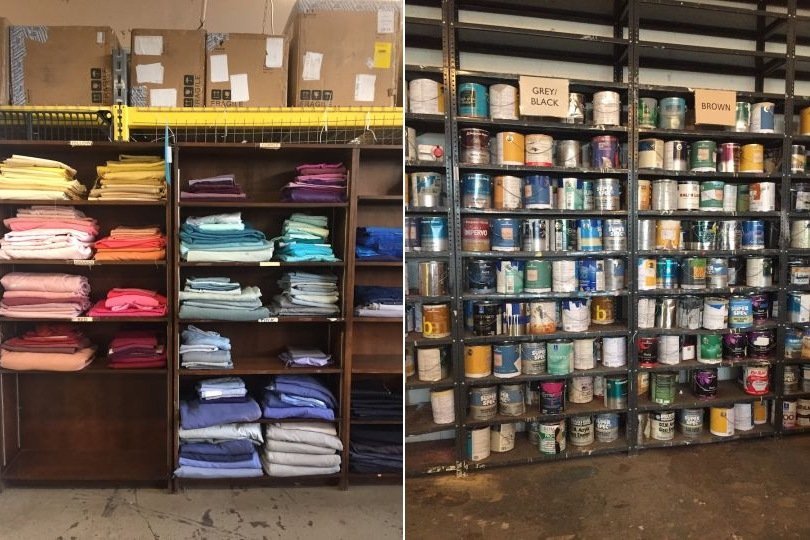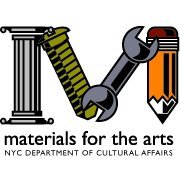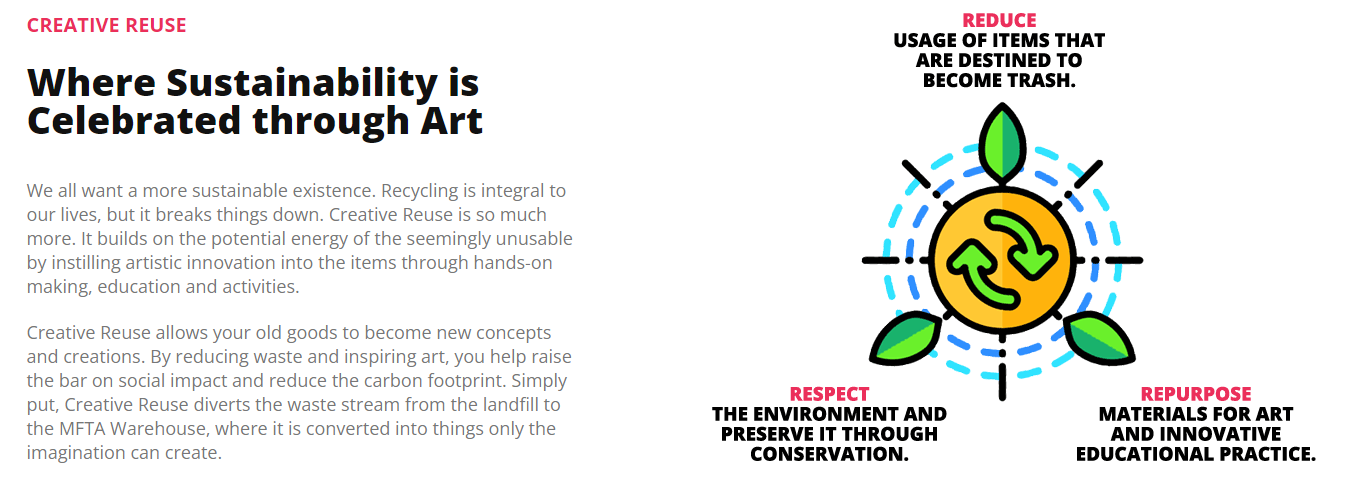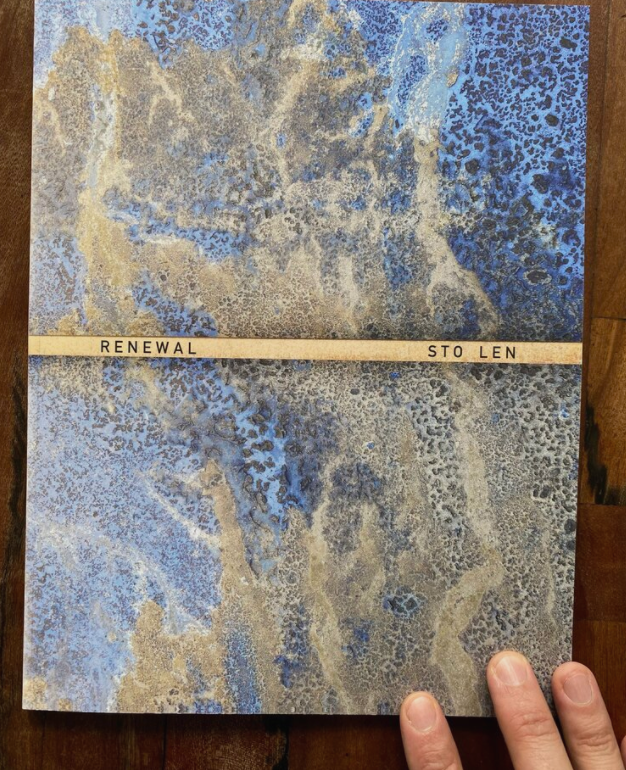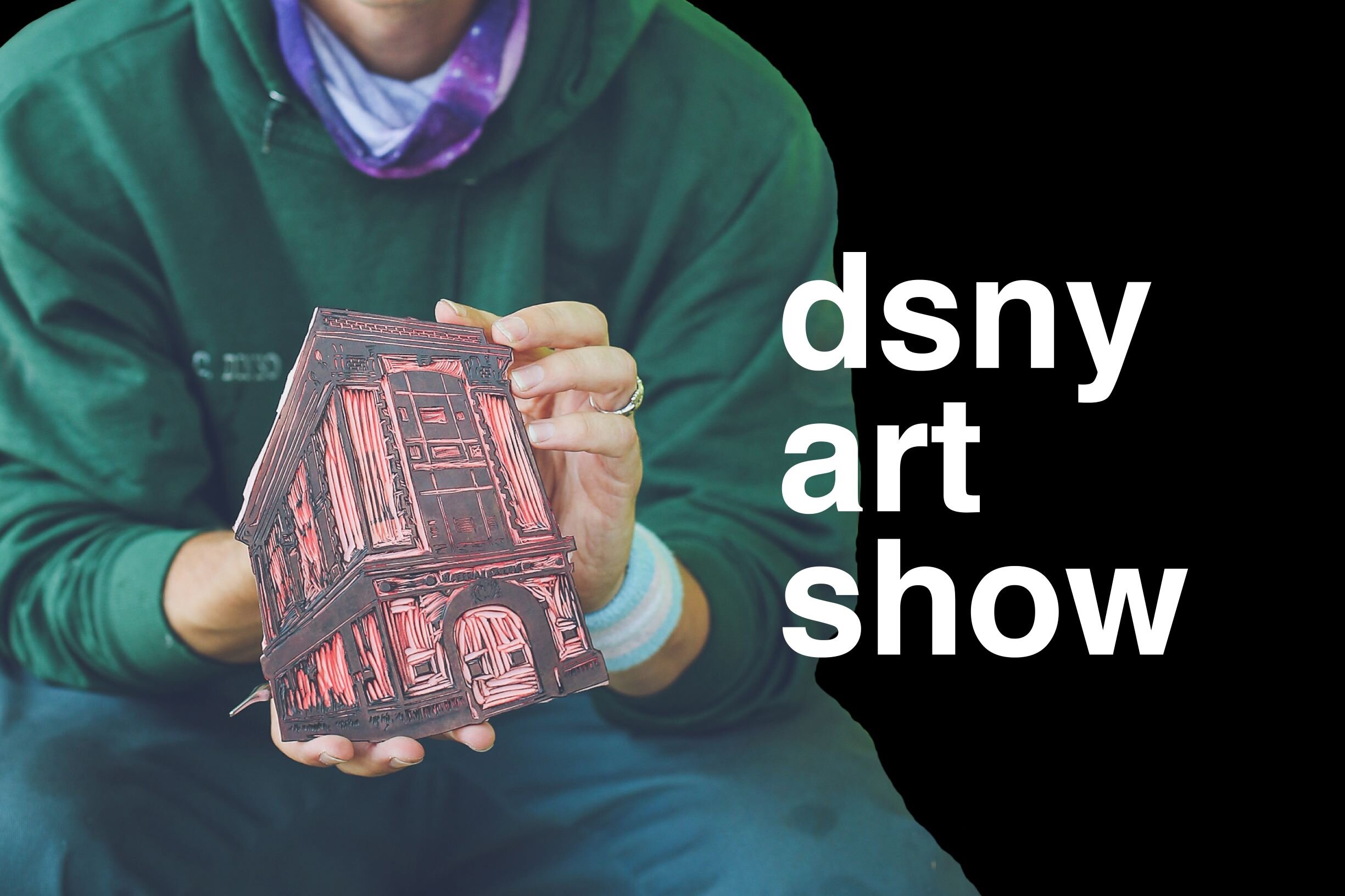From Trash to Treasure: Celebrating Sanitation’s historical support of the arts
By Anne Whiting
As our DSNY Art Show ceremoniously unveils this November, we thought it the perfect time to highlight our Department’s active, and historic, participation in the artistic spirit of New York City. (But of course—we are New Yorkers after all!) We’ve done this in many ways, from boasting our very own Artist-in-Residence, to exhibiting our Workforce’s artistic talents in various public gallery shows, to playing a major developmental role in the creation of Materials for the Arts, to transforming our Fresh Kills Landfill into a park featuring artwork by commissioned artists and by the public. Read on to learn more about DSNY’s commitment to fostering the arts.
Mierle Laderman Ukeles’ The Social Mirror Truck
Sanitation as an art form
It began with Mierle Laderman Ukeles, an artist whose work intersected all of what DSNY also represents: waste management, recycling initiatives, sustainability concern, environmental stewardship, ecological respect, and the human beings affected by (and affecting) it all.
Ukeles started her pioneering career with her Maintenance Art Manifesto 1969!, pictured above, in which she proclaimed that the work of keeping things clean and cared for was not merely a chore, but an art form. She coined such work “Maintenance Art,” and she called on maintenance workers to recognize their toils as more than just hard, unseen, dirty work. Laderman’s performance art sought to elevate the otherwise low cultural status of maintenance workers, including Sanitation Workers, low-paid cleaners and janitors, and even unpaid housewives.
In 1977, she was invited to become DSNY’s official Artist-in-Residence, and from 1979-80 she performed and documented her revelatory piece “Touch Sanitation.” Dubbed a “milestone in the history of performance art,” Ukeles met over 8500 employees of the New York Sanitation Department, shaking hands with each of them and saying, “Thank you for keeping New York City alive.”
Uplifting words by Ukeles shown in the NYC subway
Alive and Artistic
Indeed, Sanitation Workers do keep New York City alive. Without them, where would our 12,000 tons of refuse go each day? Our waste would pile up on our streets, making the sidewalks unnavigable and unsanitary.
DSNY recognized the essential and noble nature of its workforce. It also recognized that while sanitation work may be an art, Sanitation Workers themselves were also artists in the more traditional sense. So in 1980, it hosted its first DSNY Art Show. Calls for submissions were published in the Department’s community periodical, Open Door, written by then-Commissioner Norman Steisel, which published all Department and community news with the aim of fostering unity, transparency, and boosting morale. In 1979, one issue published poetry by a Sanitation Worker, titled “Sanman’s Cry” with the headline, “Shakespeare, Move Over.” In 1980, we read about the forming of the “Sanitation Band.”
“Artists Come Forward,” read the request for submissions to the Art Show, which would show off the otherwise hidden fine artwork created by Department employees when not on the job. In his community-engaging style, Steisel wrote that he wished to “arrange to have prizes donated to the winners of this contest in order to create some competition out there among our Picassos, Renoirs and Michaelangelos”—renaming his workforce as relevant artists, not merely “SanMen.”
Ultimately, over two dozen employees submitted sculpture, oil paintings, watercolors, photographs—and a hand-carved chess set!—for a public exhibition in the main lobby of the New York Telephone Company’s headquarters.
It took place during what was called “Salute to Sanitation” week, a series of public festivities organized to promote DSNY’s well-deserved (and overdue) public recognition. Recapped Steisel, “For those of you who did not get the opportunity to view the artwork, you missed something very special.”
The aim of the show was to remind even the workers themselves to remember that they were more than just “SanMen,” that they were cultural citizens of New York City, and participants in its great arts culture. “Perhaps it will be an opportunity to show the public that Sanmen are not just hulks of muscle who load garbage...they are human beings,” wrote Steisel.
Making art from waste
As the 80s progressed, DSNY continued its public participation in and service to the arts. It became a pivotal player in the development of New York City’s innovative material donation program, Materials for the Arts.
Materials for the Arts (MFTA) first started in 1978 with the dream of being an effective way for New Yorkers to responsibly, and charitably, dispose of their excess materials—be it furniture or tchotchke. It was founded by artists with some help from the Department of Cultural Affairs (DCLA), quickly grew from a group of waste-diverting art supporters driving a van to retreive “spare parts” to a go-to hub for artists-on-a-budget to obtain materials, as well as a resource for public schools in need of art supplies.
Realizing that the program helped the city’s efforts at Waste Reduction, new DSNY Commissioner Brendan Sexton joined forces with DCLA to help secure $100,000 for MFTA’s growth, solidifying its singular presence as a waste-free resource for artists and nonprofits, and merging DSNY’s commitment to waste reduction with artistic possibility.
Creative Reuse program outlined by Materials for the Arts
A joyful school teacher retrieves materials for her art courses
Public Artists in Residence
DSNY now participates in the Public Artists-in-Residence (PAIR) municipal residency program, which places artists into city government to propose and implement creative solutions to pressing civic challenges. PAIR, launched in 2015, takes its inspiration and its name from the pioneering and political work of Ukeles.
This year’s DSNY PAIR is sTo Len, whose printmaking work updates traditional Japanese techniques into an experimental collaboration with nature and a site of discourse on environmentalism and art activism. Len was the first artist in residence at AlexRenew Wastewater Treatment facility in Alexandria, VA. He is also an artist in residence as part of the Field R/D program at Freshkills Park, a transformed landfill in Staten island, NY and is a member of Works on Water, a group of artists and activists working with and about water in the face of climate change and environmental justice concerns.
Wastewater prints by sTo Len
We are honored to continue this artistic tradition, honoring Sanitation Workers as our own public artists in residence (both for their maintenance work and for their personal art talents) and open “Sanitation Celebration,” another in the series of DSNY Art Shows. Last year, we presented over 20 employee artists in a virtual exhibition sponsored by Mack Trucks. This year, we are pleased to invite visitors in person to the Pace University Art Gallery to view impressive artworks by 22 DSNY employees. Our upcoming exhibition will also feature a curated collection of pieces from Nelson Molina's Treasures in the Trash collection, as well as work by Ukeles and Len. Additionally, we have kept Steisel’s initial idea going, and are awarding a prize to the artist who best incorporates sustainability-minded reuse into his or her artwork.
We are grateful to Pace University Art Gallery and to the continued partnership and support of Mack Trucks for helping us keep the tradition of the DSNY Art Show alive and open to the public.
